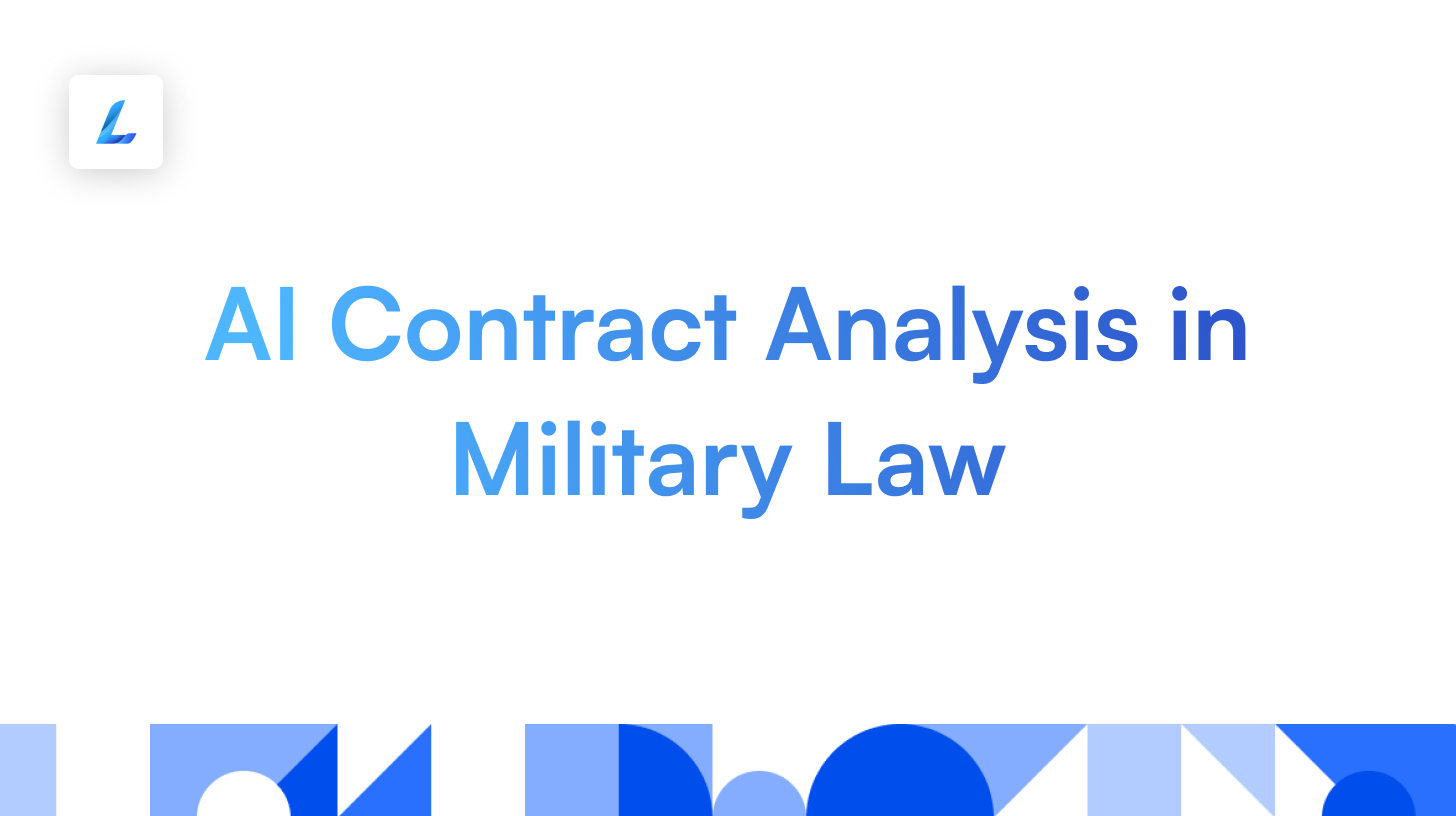Contracts are pivotal in the realm of military law, orchestrating a vast array of interactions ranging from weapon acquisitions, troop deployments, to forging international alliances. These binding documents, historically handcrafted with meticulous attention, often required numerous revisions, prolonged consultations, and expert scrutiny, making the process cumbersome and protracted. In this article we look at AI Contract Analysis in Military Law.
Enter the era of Artificial Intelligence (AI). Today, AI stands on the cusp of revolutionizing how these contracts are crafted, analyzed, and executed. It promises to infuse agility, precision, and efficiency into what was once a daunting task. As we navigate through this piece, we’ll uncover the multifaceted ways in which AI is set to redefine the landscape of contract generation and analysis within military law.
Join us in exploring a future where the rigidity of traditional contract management gives way to the fluidity and innovation of AI-driven solutions.
1. Basics and Definitions
In the intricate web of military operations, contracts stand as foundational pillars, guiding the complex engagements and ensuring a structured order. These legal documents, more than just mere agreements, encapsulate the ethos, objectives, and strategic intents of defence institutions globally.
Acquisition Contracts: Such contracts are not merely transactional. Beyond the procurement of equipment and technology, they serve as touchpoints of collaboration between defence establishments and manufacturers. They define parameters like quality checks, timelines, technological specifications, and penalties for breaches, thereby playing a pivotal role in the very defence capability of nations.
Deployment Contracts: These are intricate by design, encompassing not just where troops are stationed but also the rules of engagement, duration, objectives, and sometimes even withdrawal conditions. Given the sensitivities surrounding military deployments, especially in conflict zones or international terrains, such contracts can often shape the geopolitical narrative.
Service Level Agreements (SLAs): As militaries increasingly integrate technology into their operations, SLAs become paramount. These ensure that software, hardware, and other technological services meet rigorous standards, and any downtime or glitches are addressed swiftly. In a digital age where cyber warfare is as real as ground conflict, the efficacy of these contracts can directly impact national security.
Confidentiality Clauses: The stakes of information leakage in the military domain are astronomically high. Confidentiality clauses safeguard strategic secrets, operational blueprints, and technological innovations. A breach could not only compromise a specific operation but could have cascading repercussions on a nation’s overall defence strategy.
At their core, these contracts are embodiments of trust, commitment, and strategy. They not only regulate transactions but, in many ways, are the strategic blueprints of a nation’s defence posture. Militaries around the world hinge on these contractual frameworks to function cohesively, engage with allies, deter adversaries, and safeguard national interests.
In this high-stakes arena, the precision, clarity, and comprehensiveness of contracts are not just desirable – they’re imperative. As global geopolitics evolve and challenges amplify, the sanctity and robustness of these legal instruments will only grow in significance.
2. Relevant Cases or Historical Perspective
The F-35 fighter jet program, touted as one of the most advanced and expensive defence projects in history, serves as a prime example of the complexities and nuances embedded within military contracts. Contractual discrepancies not only resulted in financial overruns but also pushed timelines, affecting the strategic preparedness of the participating nations.
In another significant episode, during the Cold War era, ambiguities in arms control agreements often led to tense standoffs between superpowers. Even minute misinterpretations could escalate into geopolitical crises, underscoring the need for absolute clarity in such vital contracts.
Further back, during World War II, procurement contracts for military supplies faced scrutiny. Some manufacturers, due to unclear terms, delivered subpar equipment, jeopardising soldiers’ safety on the battlefield.
Had AI-driven contract analysis been available during these times, potential ambiguities or conflicting clauses could have been identified proactively. Advanced algorithms and deep learning models could comb through voluminous documents, flagging inconsistencies and offering insights based on historical data and precedent. This would not only minimise human error but also speed up the contract review process, ensuring defence establishments are agile and adaptive in their strategic endeavours.
3. AI’s Integration into the Contract Domain
With the advent of AI, contract generation and analysis in military law are undergoing a paradigm shift. AI tools can now draft contracts, ensuring they align with legal prerequisites and desired specifications. Advanced algorithms analyze existing contracts, identifying potential pitfalls, ensuring compliance, and predicting future challenges. Moreover, real-time AI-driven insights can help in negotiations, ensuring favorable terms for involved parties.
4. Introduction to Legaliser
Legaliser, a groundbreaking solution in the domain of contract management, is tailored specifically for the intricate demands of military contracts. The tool harnesses the power of AI to process dense legalese, transforming it into actionable insights. Gone are the days when meticulous manual reviews consumed hours or even days. Legaliser offers rapid turnaround times without compromising accuracy.
One of the standout features of the tool is its deep learning-based compliance checker. By drawing from a vast database of international and national military regulations, it ensures that every contract remains within legal bounds. This becomes especially crucial for military collaborations spanning multiple jurisdictions, where overlooking even a minor legal detail can have significant repercussions.
Additionally, Legaliser’s predictive analytics module is a boon for strategists and decision-makers. It assesses the historical context of similar contracts and their outcomes, providing foresight into areas that might become potential contention points in the future.
For legal teams within the military, the tool offers a collaborative platform, streamlining communications and ensuring all stakeholders remain on the same page. The intuitive user interface, coupled with robust backend algorithms, makes Legaliser a must-have for modern military establishments aiming for streamlined, transparent, and efficient contract management. The free trial period further underscores its commitment to user-centricity, allowing potential adopters to witness firsthand its transformative capabilities.
5. Conclusion
As military law embraces AI for contract generation and analysis, we are witnessing the dawn of an era marked by efficiency, precision, and proactive problem-solving. This amalgamation promises to reduce disputes, ensure smoother operations, and elevate the standards of military contracting. The future beckons a military legal landscape where AI isn’t just an aid but an indispensable ally.






